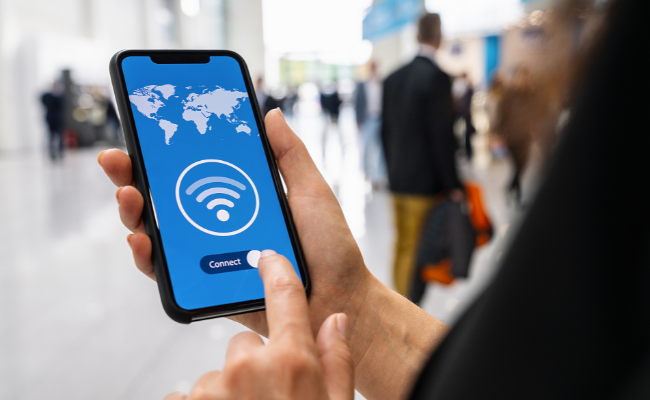What to do incase of Hand Phone Safety?
- December 02, 2023
- No Comments

What is Hand Phone Safety?
Mobile phones have evolved into an indispensable aspect of our contemporary lifestyle, playing a pivotal role in communication, granting instant access to information, and functioning as on-the-go entertainment hubs. Despite the myriad advantages these devices offer, addressing the safety concerns associated with their usage becomes paramount. Hand phone safety encompasses a spectrum of practices and measures designed to alleviate potential risks, ensuring the well-being of individuals and the broader community.
In today's digital age, our mobile phones serve a multitude of functions, from banking transactions to efficient schedule management. However, the absence of adequate security measures amplifies the repercussions of phone loss beyond mere inconvenience. It exposes us to the risk of potential theft, leaving our personal information vulnerable to falling into the wrong hands. Prioritizing the implementation of robust security measures becomes imperative, not only to thwart unauthorized access but also to safeguard the confidentiality of our sensitive data.
Why Hand Phone Safety is needed?
- The proliferation of mobile phones has given rise to various safety concerns that demand our attention. One of the most pressing issues is distracted driving. The allure of quickly responding to a text message or answering a call while behind the wheel poses a significant threat to road safety. Studies have shown that engaging in phone-related activities while driving increases the risk of accidents and injuries.
- Beyond physical safety, there is a growing concern about the security of personal information. As mobile phones store an increasing amount of sensitive data, users become vulnerable to cyber threats such as identity theft, phishing, and malware attacks. With the rise of mobile banking and online transactions, protecting personal information on smartphones has become paramount.
- Furthermore, the pervasive use of mobile phones, especially among younger generations, has raised concerns about excessive screen time. The implications of prolonged screen exposure range from eye strain and disrupted sleep patterns to more severe issues like digital addiction and sedentary lifestyles. Balancing screen time is crucial for maintaining overall well-being.
How to implement Hand Phone Safety Practices:
- Avoid Distracted Driving: Distracted driving is a leading cause of road accidents, and mobile phones are often a key contributing factor. To address this issue, individuals must adopt responsible phone use practices while driving. This can include using hands-free options for calls, utilizing in-car phone mounts to keep the device accessible without distraction, and, most importantly, refraining from texting or engaging in other distracting activities while behind the wheel.
- Secure Personal Information: Protecting personal information on mobile devices requires a combination of awareness and technological measures. Users should exercise caution when downloading apps, ensuring they come from reputable sources. Regularly updating phone security settings and employing strong, unique passwords can add an extra layer of defense against cyber threats.
- Monitor Screen Time: The World Health Organization recommends limiting screen time for children and adolescents to ensure a healthy lifestyle. Parents can use built-in features on smartphones or third-party apps to set daily screen time limits. Establishing screen-free zones during meals and before bedtime can contribute to a healthier balance between digital engagement and other activities.
- Educate Against Cyber Threats: Cyber threats are constantly evolving, and individuals must stay informed to protect themselves. Educational initiatives at the community level, in schools, and workplaces can raise awareness about common cyber threats and provide practical tips on how to avoid falling victim to scams. This includes recognizing phishing attempts, using secure Wi-Fi connections, and being cautious about sharing personal information online.
Treatment Solution: Nurturing a Culture of Responsibility
Addressing hand phone safety requires a comprehensive and collaborative effort. A key component of the solution is the development of a culture of responsibility, wherein individuals are educated about the potential risks associated with mobile phone use and empowered to make informed decisions. This involves educational institutions, workplaces, and communities playing an active role in promoting safe practices.
- School Initiatives: Schools can integrate digital literacy programs into their curriculum, educating students about the responsible use of mobile phones and the potential dangers associated with excessive screen time. This can include lessons on cyber hygiene, the consequences of distracted driving, and strategies for maintaining a healthy balance between online and offline activities.
- Workplace Awareness: Employers can contribute to hand phone safety by fostering a workplace culture that encourages responsible phone use. This may involve implementing policies that discourage phone use during meetings or while operating machinery. Providing educational resources and training on cybersecurity best practices can also enhance employee awareness.
- Community Campaigns: Community-driven initiatives, such as awareness campaigns and workshops, can reach a broader audience. Local organizations, government bodies, and advocacy groups can collaborate to organize events that highlight the importance of hand phone safety. These campaigns may include distributing informational pamphlets, organizing workshops, and leveraging social media platforms to spread awareness.
Benefit Points: The Advantages of Hand Phone Safety
- Reduced Accidents: Implementing responsible phone use practices, particularly while driving, can lead to a significant reduction in accidents caused by distracted driving. This not only protects individuals and passengers but also contributes to overall road safety.
- Enhanced Digital Well-being: By monitoring and limiting screen time, individuals can experience improved digital well-being. Reduced screen time has been associated with better mental health, decreased stress levels, improved sleep quality, and increased physical activity.
- Lowered Cybersecurity Risks: Educating users about cyber threats and promoting security measures can significantly reduce the risk of falling victim to online scams, identity theft, and other cybersecurity issues. This protects individuals from financial loss and preserves their digital privacy.
- Improved Focus and Productivity: Setting boundaries on phone use can lead to enhanced focus and productivity, both in personal and professional settings. By minimizing distractions, individuals can concentrate on their tasks, contributing to overall efficiency and satisfaction.
Comments (0)